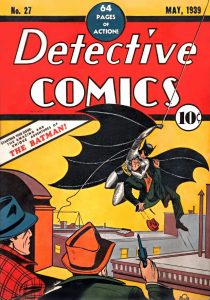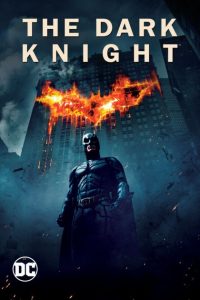When I was a kid, I was obsessed with Batman.
Oh, who am I kidding, saying “when I was a kid?” Heck, I’ve been a fan of the black-clad comic book vigilante my entire life, and I would be lying if I said I don’t still have a box of dusty Batman comics sitting in my dorm room to this day.
Like most kids, I was into other superheroes, too. But my greatest attachment was always to the Dark Knight himself. While other heroes dressed in bright spandex and fought firmly on the side of righteousness, Batman’s dark look, grim personality, and somewhat-questionble ethics were infinitely more intriguing than the cotton-candy-colored world of Superman.
The first superheroes of the 1930s were morally-upright characters who fought cookie-cutter bad guys in the name of truth, justice, and the American way. But Batman represented something different. Superman grew out of a tradition of American exceptionalism and moral authority, but the Dark Knight came from a different, darker tradition: English gothic literature. Though Batman eventually got the “camp” treatment on television, the d ark world, flawed heroes, and horror elements of gothic literature were crucial the character and world of Batman, creating a unique space in popular culture and one of America’s most enduring characters.
ark world, flawed heroes, and horror elements of gothic literature were crucial the character and world of Batman, creating a unique space in popular culture and one of America’s most enduring characters.
Even without having a literary background, one can get very specific images from the term “gothic.” The “goth” in “gothic” implies the dramatically-eyelinered, pentagram-clad subculture of people who listen to too much Cradle of Filth. While authors of the 19th centuries didn’t usually dye their hair black and wear combat boots, dark themes, romantic anti-heroes, supernatural forces, and dark, isolated locations became the standard tropes of the Gothic literature subgenre. Novels like Jane Eyre, Manfred, and Wuthering Heights traded as much on their atmosphere and darkly moody characters as their romantic plots. Batman borrowed heavily from these atmospheric and character choices.
While Superman does his work in the shiny, modern, utopian city of Metropolis, Batman resides in the dark, grim, grimy city of Gotham. While the city is supposed to be a substitution for New York, the design and architecture of the city has always veered towards dramatic spires, looming towers, and an art style midway between art deco and gothic. Combined with the stories often being set at night and the oft-used location of a creepy insane asylum, the setting of Batman comics, despite being contemporary to the 20th century, could easily be the background to a Bram Stoker’s forgotten masterwork. Though the atmosphere is adapted from gothic novels, the most interesting influence they had on the hero was in characterization.
During the Romantic era, a new type of heroic character came into vogue, termed “the Byronic hero.” Unlike the traditional novel heroes, Byronic characters were flawed outcasts, often rich and educated, “who somehow balance their cynicism and self-destructive tendencies with a mysterious magnetism.” Batman’s alter ego, Bruce Wayne, would not be out of place in a novel like Jane Eyre. He’s a rich playboy who nonetheless lives a solitary life, his only companion being his lifelong butler. Wayne’s self-destructive flaws lead to him fighting crime, and, true to a Byronic hero, he ends up attracting plenty of heroines and villainesses with his brooding magnetism. This character choice is the most singular thing about Batman. From the beginning, his character has been shrouded in mystery, loneliness, and trauma, leading him towards his life of crime fighting. The backstory for Batman’s character would be considered dark, even for a pitch-black gothic novel. In the first year of the comic’s production, the writers explained that Bruce Wayne became a vigilante after watching his parents’ murder as a young child. The idea of a protagonist whose dark past results in an identity that he must hide from his familiars is a device used famously in Jane Eyre. While it is now common for comic book heroes to have a complex character story, Batman was one of the first comics to explore this route, and ended up paving the way for comic books to become literary.
The gothic nature of the Batman comic books was unique and revolutionary when it was created, standing in opposition to the pristine, bright world of other superheroes. But why has this dark character stayed such a crucial part of the public consciousness since then? We empathize with his story and understand his choices, the dark themes appeal to mature readers, and the atmosphere creates a cold excitement. But the dark nature of Batman comics, and gothic literature in general, does something more. Gothic literature, and the increasingly dark stories of Batman, force us to come face-to-face with the grotesque and terrifying parts of human nature, making us evaluate the dark parts of ourselves. Batman, as a hero, most constantly suppress his negative nature when facing these threats, and, in the nature of a true hero, comes out victorious.
Happy almost-Halloween.

